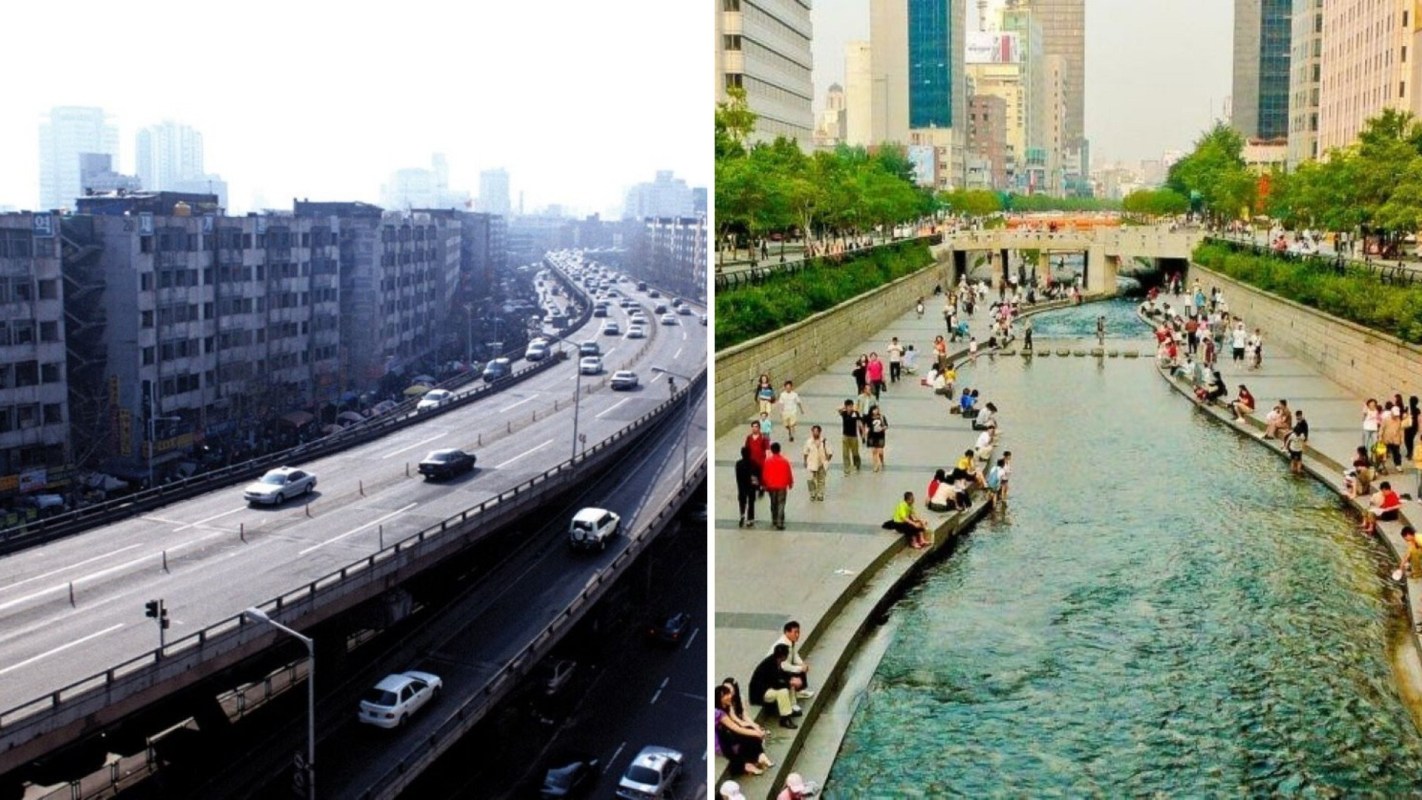Seoul's stream restoration project has been a roaring success, as made plain by a set of before and after photos shared to Twitter.
In the first photo, we see the multi-level freeway that once paved over the Cheonggyecheon Stream in downtown Seoul. There is next to no pedestrian space or greenery, and there's visible air pollution in the distance.
All that has changed since the Cheonggyecheon reopened to the public in 2005. According to anti-car dependency campaigner Hayden Clarkin, who shared both photos to Twitter, more than 500,000 people now visit the replenished green space each week.
In 2001, Seoul's new mayor, Lee Myung-bak promised to restore the Cheonggye Creek after it was sealed over for an elevated freeway in 1968. Since its removal, 500,000 people each week visit the 9km of river and greenery in the heart of the city. pic.twitter.com/yyj8ieyCbH
— Hayden Clarkin (@the_transit_guy) February 6, 2023
What is Seoul's Cheonggyecheon Stream recovery project?
In 2001, Seoul's mayor, Lee Myung-bak, pledged to restore the Cheonggyecheon Stream and improve the environmental and aesthetic conditions of downtown Seoul.
The stream was concreted over in the 1970s to make way for a multi-level, six-lane highway, which introduced far more pollution to the city. Over the years, congestion proved to be a major problem on this highway, with more than 160,000 cars driving over it per day.
In 2000, when an engineering survey revealed structural weaknesses that would be costly to repair, the government opted instead to tear down the highway and restore Seoul's Cheonggyecheon Stream.
Unearthing waterways like this is known as "daylighting" and is catching on in other cities that previously paved over rivers, like Sheffield, England and Paris, France. More than 100 additional elevated roads in South Korea are also set to be removed.
How has recovering Seoul's Cheonggye Creek helped the environment?
Restoring Seoul's Cheonggyecheon Stream has had measurable benefits for multiple environmental challenges, including local ecology, air pollution, and flood management.
Biodiversity has increased by a reported 639% in the area since the restoration. According to one report, 17 species of birds and fish were observed before the restoration. Afterward, that number jumped to 400 different species spotted in the stream corridor.
Air quality also improved by 35%, with air pollution — which is linked to heart attacks, respiratory conditions, and even worse sports teams — reduced from 74 to 48 micrograms per cubic meter.
The risk of flooding has also decreased. The stream now provides protection against a 200-year flooding event and can sustain a flow rate of 118mm per hour.
Seoul's urban heat island effect has cooled down significantly in the area, with temperatures along the waterway reduced by between 3.3° to 5.9°C (or 5.9° to 10.6°F), compared with a road just seven blocks away.
Is Seoul's Cheonggyecheon Stream restoration too good to be true?
In spite of its environmental achievements, Seoul's Cheonggyecheon Stream restoration did also suffer some setbacks.
The stream is experiencing a worsening blue algae problem, according to Listen To The City, because its bed is made of concrete, so it lacks natural purification abilities.
Local authorities are increasing their maintenance spending on the stream by an average of 30% a year to combat the blue algae problem.
The river's construction also displaced some communities that operated on the bypass, like a local flea market, which told The Guardian that they were not given a meaningful alternative.
Yet the Cheonggyecheon Stream restoration is still seen by and large as a success and can serve as a blueprint of what to do — and what not to do — for similar daylighting projects.
Join our free newsletter for cool news and cool tips that make it easy to help yourself while helping the planet.









